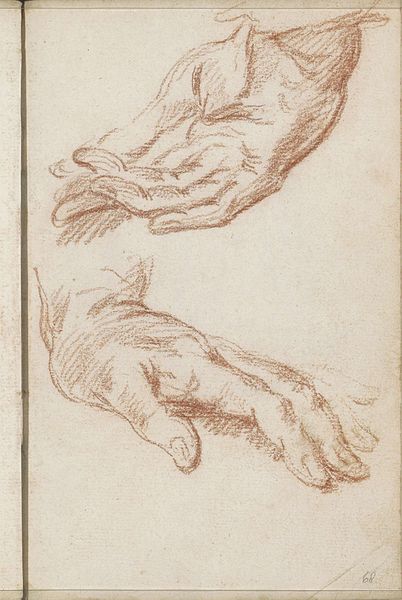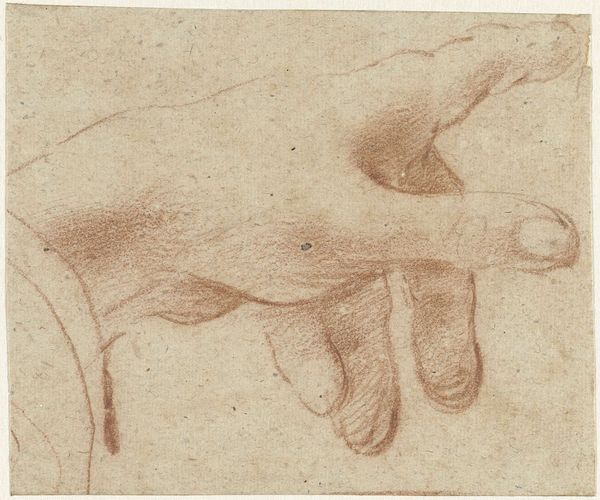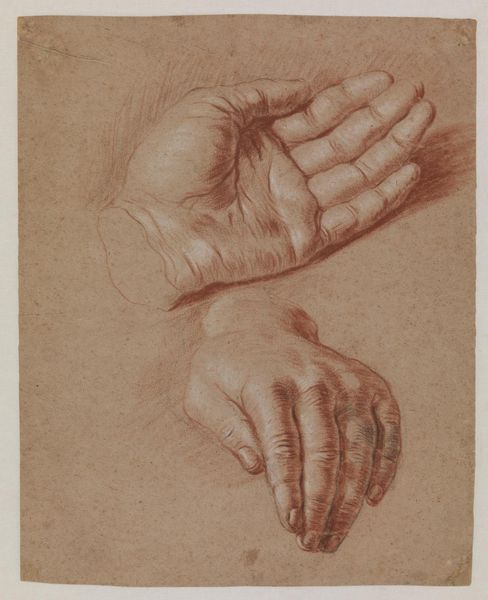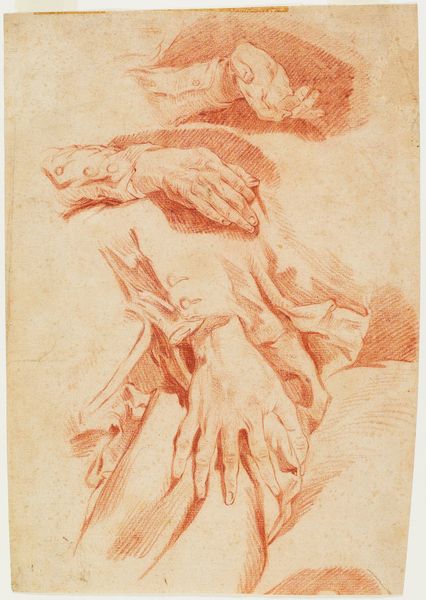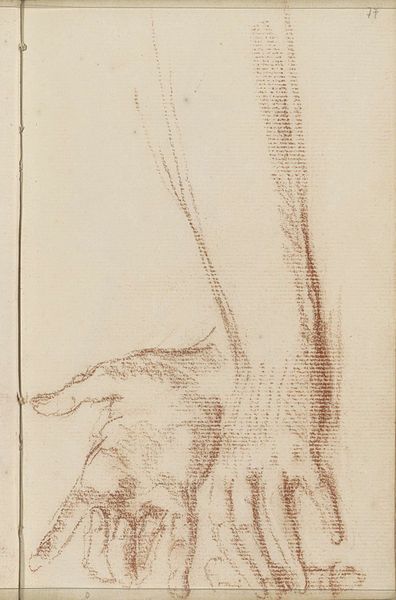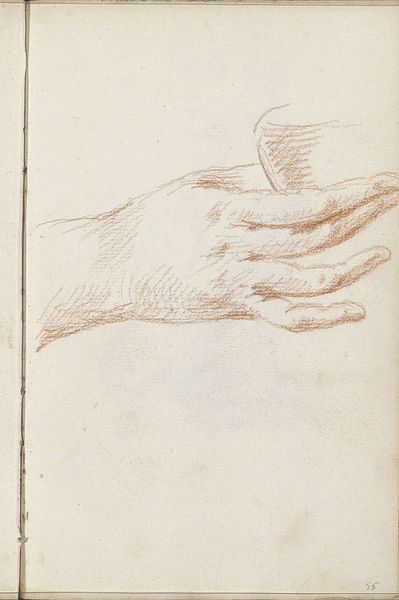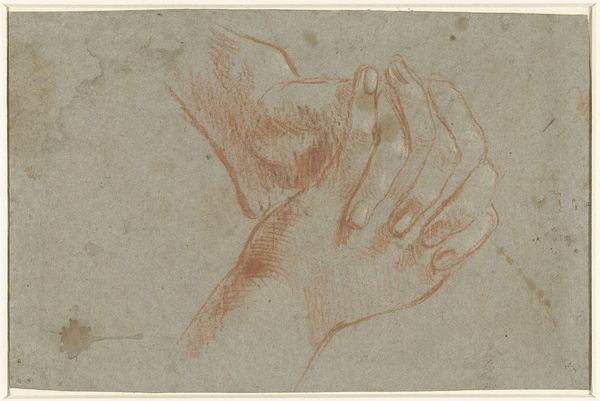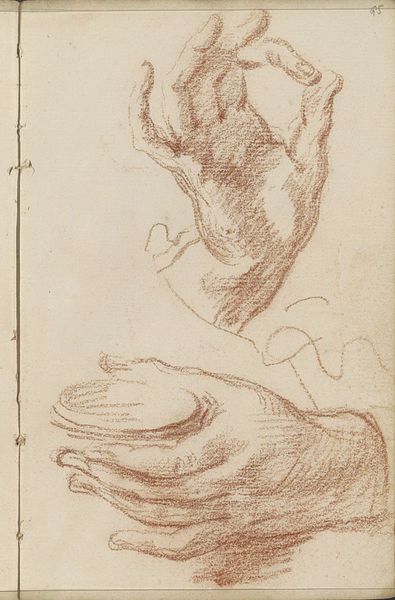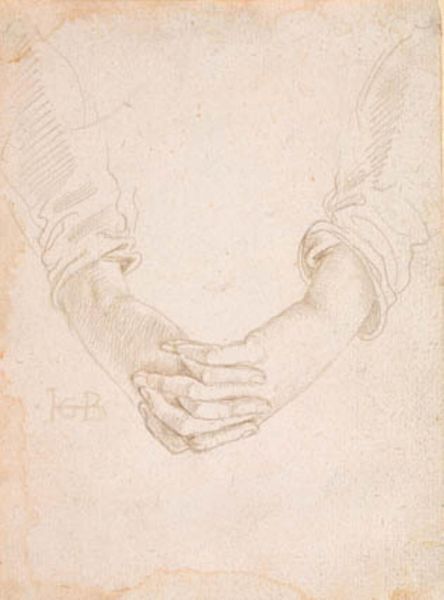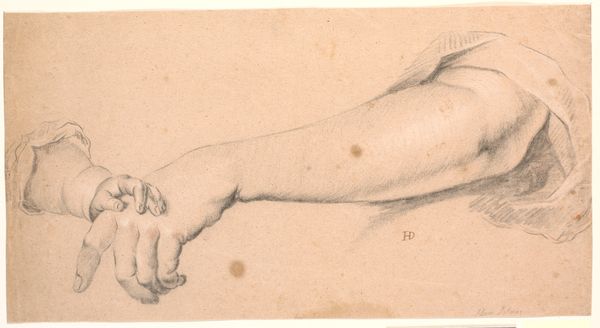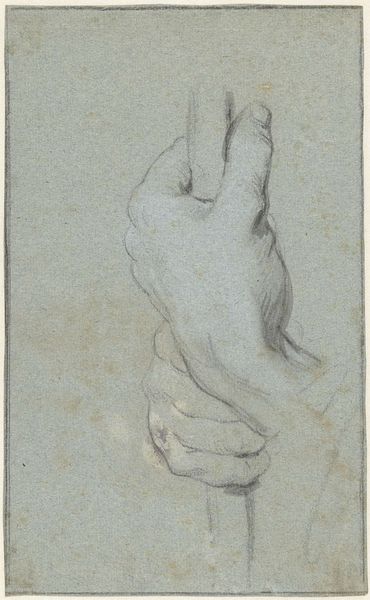
drawing, pen
#
portrait
#
drawing
#
pen
#
academic-art
#
realism
Dimensions: Sheet: 8 3/8 × 5 7/8 in. (21.3 × 14.9 cm)
Copyright: Public Domain
Curator: Jacob de Wit created this drawing, "Study of Two Hands," sometime between 1700 and 1775. It's a pen drawing, offering a detailed look at anatomical form and rendering. Editor: I find it striking. The monochromatic palette, the warmth of the pen on paper...it's intimate, like catching a private moment of artistic exploration. Almost as if it were an unconscious peek into artistic methods and the preparation of artwork. Curator: Indeed. It represents a traditional practice where artists developed their skills through anatomical drawings. Such drawings served several functions. They are part of artistic pedagogy but they were also sometimes used in paintings. Editor: I’m interested in how these hands, though a study, still suggest narrative potential. What were these hands meant to hold, to create? There is something both practical and symbolic in depicting these extremities; their utility goes beyond just labor, as an important medium of personal and physical expression. Curator: I agree. Consider the social and historical context of De Wit’s time. Guilds and academies dictated artistic training. Mastery over representation, especially the human form, signified status. Skill with representing body parts was considered the sign of true mastery of representing complex things. This level of detail reflects the artist’s meticulous observation but it also testifies to art's social function at the time of its production. Editor: Looking closely, you see a tension between control and expressiveness. The hands aren’t idealized. They show wrinkles and bones; they feel lived-in, relatable and perhaps genderless. Maybe even ageless. It challenges us to think about who was—and was not—accorded artistic representation during that era. Curator: That’s a fine point. Often these studies functioned within a closed circle: between master artists and workshop, or even private viewing. It offers us a glimpse into the world of how academic canons shaped art production but at the same time there is an intimacy to these hands, with the character it seems that the academic exercise attempts to suppress. Editor: It's amazing how such a straightforward sketch opens up these complex questions about artistic intention, historical context, and the ongoing relationship of artistic output within our time, isn't it? Curator: Yes, looking at these academic drawings gives great insight to understanding 18th century workshop procedures and social expectations within the art world. There is always more to learn.
Comments
No comments
Be the first to comment and join the conversation on the ultimate creative platform.

